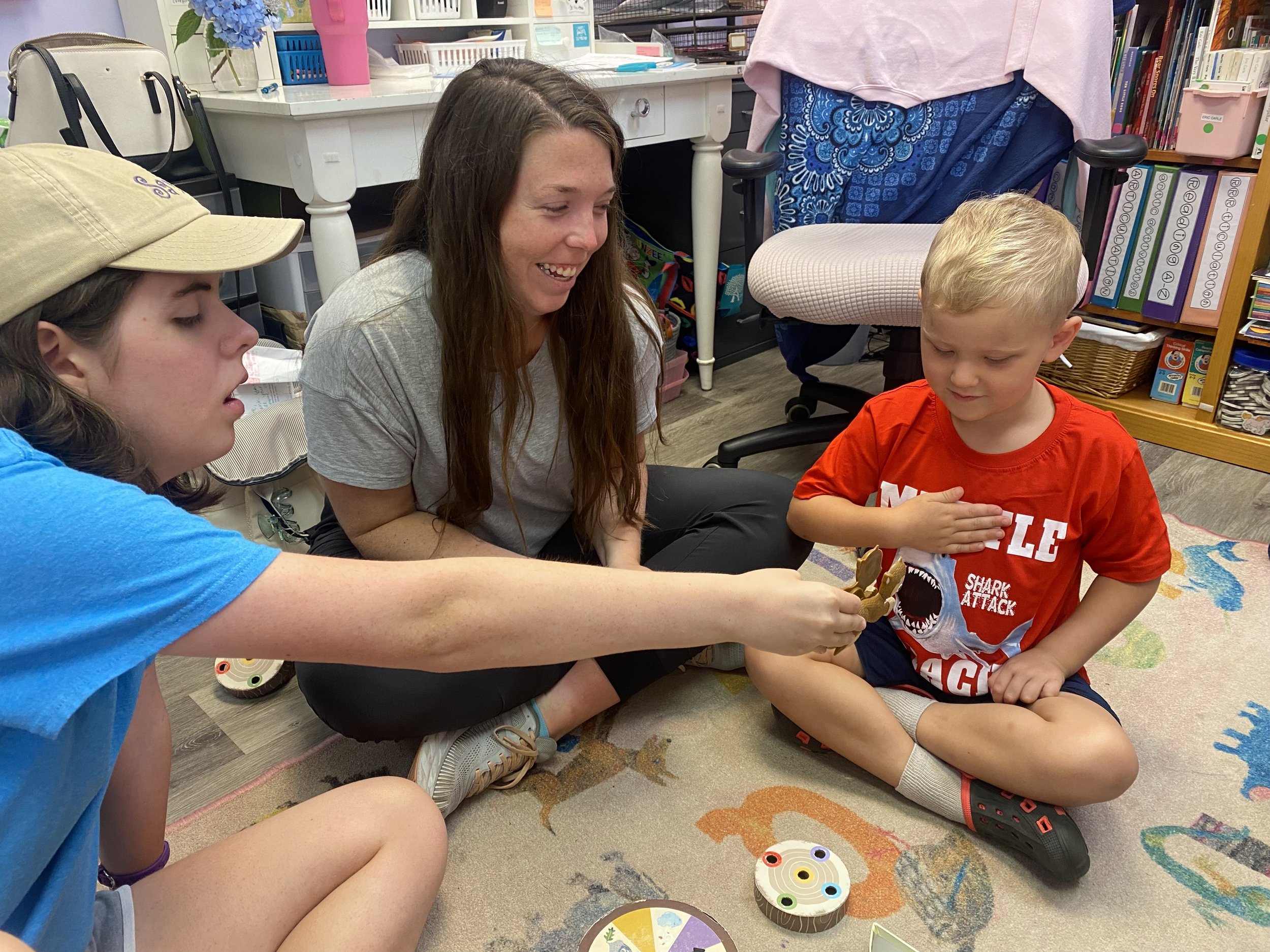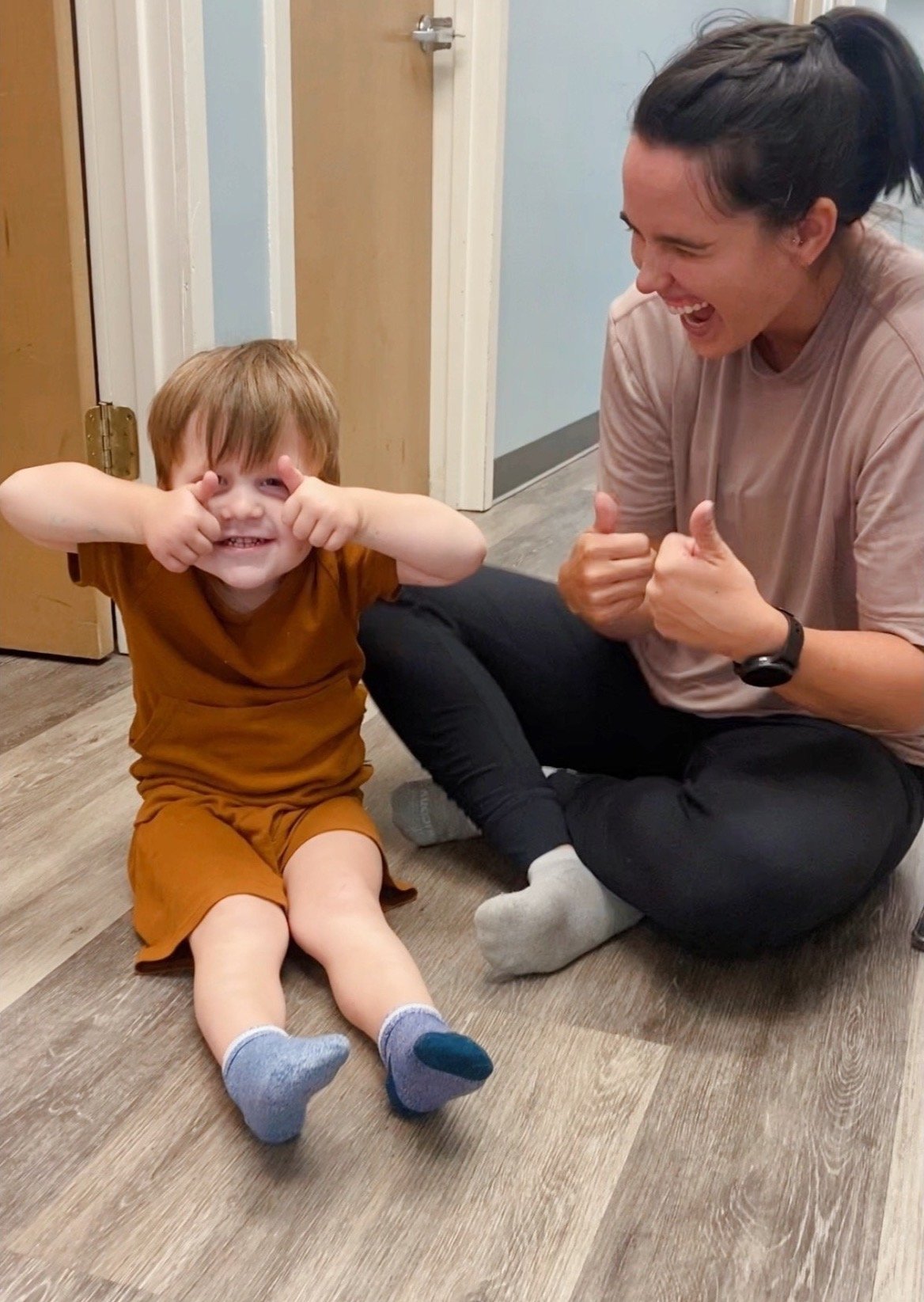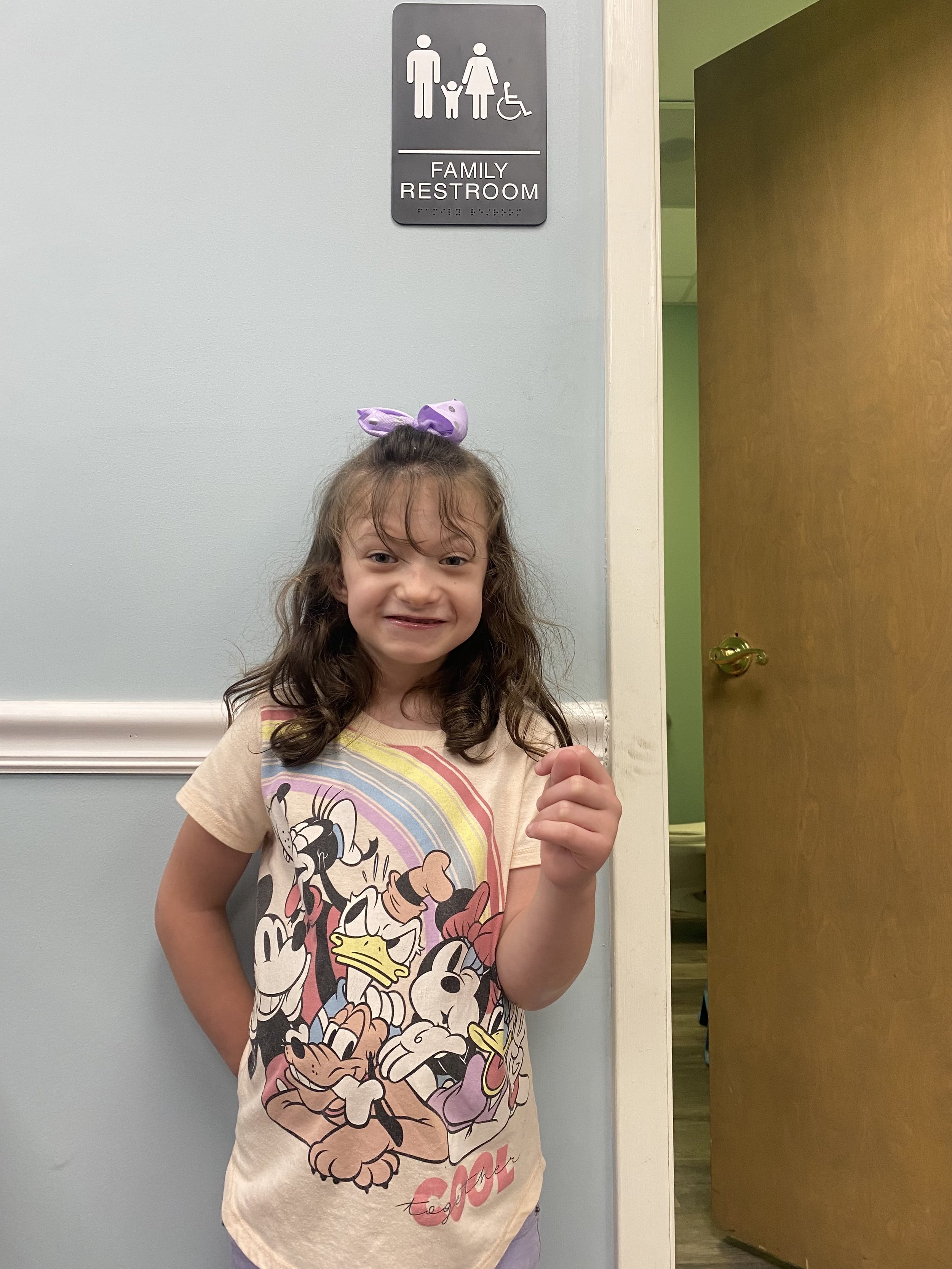Benefits of Using American Sign Language in Speech Therapy Sessions
Written by: Elisabeth Madeline, Summer 2023 Intern
Within a collaborative space like AID-L, many tools are utilized in order to find the most effective approach for a child’s success. In the SLP realm, tools such as AAC devices, games, co-treatments, and much more may enrich a child’s learning in their therapy session. Another one of these practices that SLPs may utilize is American Sign Language, or ASL. ASL can be helpful when used simultaneously with verbal communication, as it allows for two forms of communication to optimize a child’s understanding of what is being said to them or what is being asked of them.
In practice, this may look like teaching the child a few basic signs, such as “all done”, “more”, “want”, “help”, or “please”. Other signs that could be useful for following conversations could be “who”, “what”, “when”, “where”, “why”, and “how”. This could be taught by using these simple signs during usual verbal conversations with the child, and helping them with their hand shape for the sign production. In my time as an undergraduate student, I have been able to observe ASL being used during therapy sessions, and have been amazed at just how helpful visual communication can be. When ASL is used simultaneously with (or immediately after) verbal speech, it is apparent how much more a child understands what is being asked of them or told to them.
Two forms of communicative input can give children who need it more of a chance to effectively understand what is being communicated towards them.
Personally, I have studied ASL in school and have acknowledged the usefulness of it for children in both Deaf and hearing communities. Whether a hearing child is too frustrated to speak, cannot get their words out, or simply are more comfortable with visual communication, ASL can be an extremely useful tool when a child is learning how to communicate with the world around them.
A common misconception of using ASL is that it delays spoken language because they should be speaking and not relying on their hands for communication. If this was true, using ASL in therapy sessions would obviously be a huge concern and setback for SLPs. According to Speech and Language Kids, when a child uses sign language, they are able to develop their language system before they are able to speak (SLP Carrie, 2023). This actually gives them a head start on communicating until their mouth and speech system can catch up. Like any other language, ASL has rules and grammar. This gives a child a very early idea of grammar and the order of language. This means that typical children as young as 9 months can begin communicating and learning language, which is three months before children who must rely on verbal speech to communicate (SLP Carrie, 2023). Children with speech and language delays, who are the children who typically go to speech therapy, can also have huge benefits when introduced to ASL at a young age. For some children, learning ASL and realizing the importance of communication may be the push they need to begin speaking. According to Speech and Language Kids, this is often the case for children with Autism. Once these children learn the power of communication after beginning to sign, they often are more motivated to communicate through speech since they now realize what will happen when they communicate (SLP Carrie, 2023). ASL can essentially be a motivating factor for learning to communicate through speech therapy.
Along with speech benefits, manipulating their hands when signing can be a huge benefit toward the childs’ fine motor skills. Along with motor skills, having both a verbal and a visual representation of everything in the world around them, a child with ASL skills would have better memory and word recall. Just like a child learning to speak Spanish, French, or Italian, a child learning ASL would benefit their brain by increasing their brain plasticity and boosting their capacity for learning (Paddock, 2016). Although the sign language used in a therapy session would be fairly basic, the acquisition of any amount of language can help an individuals’ executive functioning, which includes attention, planning, their ability to follow directions, and much more (Aliouche, 2022). As shown above, there is a plethora of benefits that ASL can have on a child that goes further than just their speech abilities.
During my internship at AID-L, I have seen many therapists utilize ASL and have had conversations with them about the benefits it can have when used in therapy. In the clinic, I have seen signs such as “all done”, “more”, “who”, “again”, “go”, “yes”, and much more. When signed by a child, it is fascinating to see the joy they get from being understood and being able to communicate with their speech therapist. The confidence and positive feedback that they get from this has been evident and shows the value that using ASL has for a child. When ASL is used by a therapist, usually simultaneously with verbal speech, it adds another form of communication to give the child two ways to understand what is being said. It also can reinforce their verbal understanding, by associating a visual sign with a spoken word. It can be largely beneficial to a child’s confidence to be able to exactly copy a sign, especially if they are someone who cannot yet exactly copy the spoken word. Seeing this tool utilized at AID-L has been so valuable and is something I will carry with me in my future education and future career.
So, what can you do at home to boost your child’s communication skills through ASL?
Combining verbal speech with basic signs is very effective and will help create an association in your child’s mind. If you notice that your child wants something that they cannot verbally communicate to you, try showing them the sign for what they desire. If they are hungry but do not say this to you, show them the sign for hungry and have them repeat it back to you. If they seem to be finished with their meal or with a game they are playing, show them the sign for “all done” and have them repeat it back to you. Knowing and using this sign would be more effective than them getting frustrated and upset, and gives them a way to communicate and be understood!
In conclusion, ASL being utilized at home or in Speech Therapy would be very influential in your childs’ communication skills. The goal of a SLP is to help children effectively communicate with the world around them. For some children this may be through verbal speech, for some it may be through an AAC device, and for others it could be through sign language. It is important to recognize that communication can be both verbal and visual, and acknowledge that the biggest goal is helping your child communicate their needs and ideas to the world around them.
AID-L has started posting a “sign of the week” each week on our Instagram and Facebook pages. Follow along to learn more signs to use with your child!
A helpful website for learning basic ASL is https://babysignlanguage.com.
Resources
Aliouche, H. (2022, February 15). The impact of learning a language on Brain Health. News. https://www.news-medical.net/health/The-Impact-of-Learning-a-Language-on-Brain-Health.aspx#:~:text=The%20link%20between%20neuroplasticity%20and,rapidly%20and%20at%20any%20age.
Paddock, C. (2016, September 5). Language learning boosts brain plasticity and ability to code new information. Medical News Today. https://www.medicalnewstoday.com/articles/312708#:~:text=By%20studying%20brain%20electrical%20activity,circuits%20for%20coding%20new%20information.
SLP Carrie. (2023, March 9). Can sign language help children with speech delays?. Speech And Language Kids. https://www.speechandlanguagekids.com/using-sign-language/#:~:text=Using%20Sign%20Language%2C%20The%20Research,support%20their%20ability%20to%20speak.





